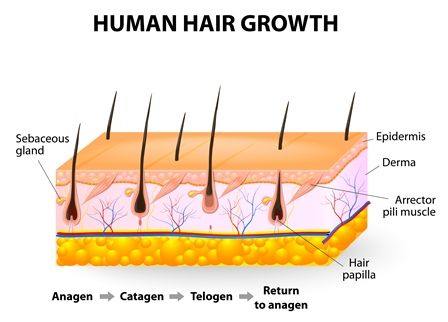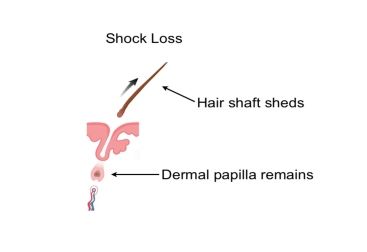Will hair shed after hair transplantation?
Shedding after a Hair Transplant
Hair shedding is considered a normal function of the body, as it is quite common to shed anywhere between 50-100 hairs a day. It is, however, important to clearly distinguish between normal shedding and the post-operative shedding of transplanted hair grafts.

Shedding of Normal, Non-Transplanted Hair
Hair goes through a cycle of growth and shedding made up of the anagen, catagen and telogen stages. This cycle, unlike the hair growth cycles of other mammals, is completely random, and a varying number of hairs can be in any one of these phases at any given time.
The anagen phase is otherwise known as the active phase of hair, and lasts for about 2-6 years. During this phase, hair grows about 1cm every 28 days. The catagen phase is referred to as the “transitional phase”, and lasts for 2-3 weeks. At any given time, about 3% of all hairs are in this phase. The telogen phase, otherwise known as the “resting” phase, is where most shedding occurs. About 6-8% of all hairs can be in the telogen phase, and can last for about 100 days. During this time, as much as 50-100 hairs are shed.
Post-Operative Shedding of Transplanted Hair Grafts and Existing Hair
Patients often report continued hair shedding after undergoing a hair transplant procedure. It is important to note that hair shedding after a hair transplant is a normal occurrence and is the body’s way of responding to the trauma it received during the hair transplant procedure.

Shedding of hair grafts after a hair transplant can be noticed anywhere between 1-5 weeks after the hair transplant procedure. Patients are often alarmed by the continued loss of hair, however, a few months after the procedure; they can be assured that new hairs will eventually grow back again. Keep in mind that “shock loss” is a normal part of the hair restoration process and is not indicative of any permanent damage on the hair–though it is unavoidable, it is also temporary. New hairs will take time to mature and will grow at different rates.
Interestingly, the more severe one’s hair loss and hair miniaturization is, the more likely that person will experience increased hair shedding after a hair transplant.
Keep in mind that “shock loss” is a normal part of the hair restoration process and is not indicative of any permanent damage on the hair – though it is unavoidable, it is also temporary. New hairs will take time to mature and will grow at different rates.


